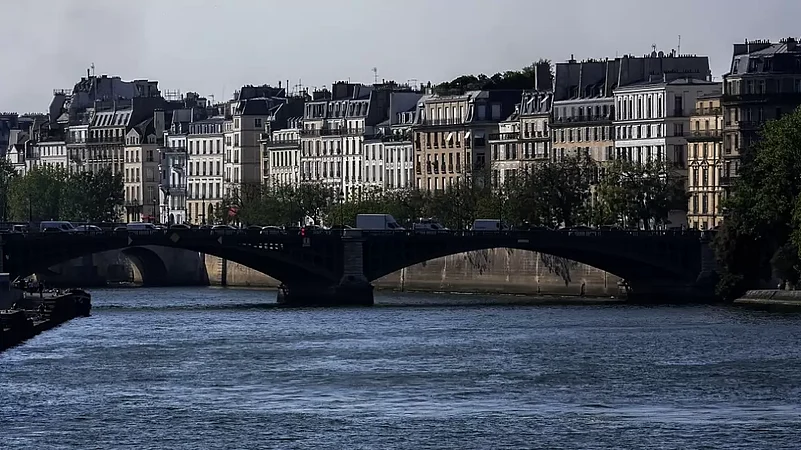In a historic milestone, Paris is set to reintroduce swimming in River Seine after a century-long ban due to its polluted waters. With the upcoming Olympics as a catalyst, the city has undertaken a remarkable 1.4 billion euros regeneration project that has been universally hailed as a success. This ambitious endeavour aims not only to host three Olympic and Paralympic events in the Seine but also to create three open-air swimming areas accessible to the public by 2025.
A Century Of Transformation
River Seine, immortalised in literature, art, and cinema, has been the lifeline of Paris. Yet, like many Western cities, Paris faced the decline of river quality due to industrial sewage and population growth. The Seine suffered a loss of aquatic life, leading to a ban on swimming in 1923. Significant progress has been made in reducing pollution over the last two decades but there were challenges to reaching official cleanliness standards.
To address the problem, Paris undertook a regeneration project as a solution that included the construction of a vast underground reservoir, ensuring that excess wastewater would no longer flow directly into the Seine during heavy rain. This reservoir can store water from 20 Olympic-sized swimming pools and is set to be operational by the time the Olympics commence next year. Additionally, strict regulations and improvements in sewage treatment have drastically reduced pollution, leading to the return of aquatic life and the prospect of safe swimming in the river.
As Paris celebrates the revitalisation of its iconic river, India can draw inspiration from this remarkable achievement to address the critical issue of cleaning its own sacred rivers, Yamuna and Ganga. The situation in India, particularly with the Yamuna and Ganga rivers, bears a resemblance to Paris's historical struggle with the Seine. Both rivers have faced immense pollution challenges stemming from industrial waste, untreated sewage, and religious practices. As a result, the waters of Yamuna and Ganga have become dangerously contaminated, affecting human health and destroying aquatic ecosystems.
Namami Gange: India's Quest For Pure Ganga
The Ganga, often considered the lifeline of India, flows for about 2,525 kilometres through multiple states. Despite being a symbol of cultural and spiritual significance, the Ganga faces severe pollution from municipal and industrial waste, agricultural runoff, and religious practices that involve the immersion of idols and religious offerings. The Ganga Action Plan, launched in 1986, and its subsequent phases have made some progress, but the result is not significant. In 2014, the Indian government launched the Namami Gange project. Initially, the focus was on building sewage treatment plants to control pollution. However, it has now evolved into a holistic approach, incorporating cultural aspects and rural economy development along Ganga's banks.
Namami Gange's achievements have been significant, with the United Nations recognising it as one of the top 10 world restoration flagships. The project has made progress in reducing pollution, ensuring compliance with water quality standards, and promoting organic farming to reduce chemical pollution.
Yamuna Restoration: A Step Towards Clean Future
Yamuna is a major tributary of the Ganga, which flows through northern India for over 1,376 kilometres. Industrial effluents and untreated sewage account for 90% of the pollution. According to a 2020 research by the Central Pollution Control Board (CPCB), the biochemical oxygen demand (BOD) levels in the Yamuna, an indicator of organic pollution, exceeded the permissible limit in multiple locations. The government has undertaken a five-point action plan to clean the river and ensure treated water flows into it. Initiatives include in-situ treatment zones, increased sewage treatment capacity, and the promotion of organic farming along the river's banks.
Taking a cue from Paris, India can learn several crucial lessons in its efforts to clean the Yamuna and Ganga.
Comprehensive Regeneration Projects: Paris's success can be attributed to its extensive regeneration project that tackled multiple aspects of pollution. India needs to adopt a similar approach that includes upgrading sewage treatment plants, controlling industrial discharge, and implementing strict regulations to prevent further pollution.
Infrastructure Upgrades: The "single-system" drainage infrastructure in Paris contributed to water pollution. India must invest in modernising its drainage systems and investing in green infrastructure like wetlands and reed beds to filter pollutants.
Public Awareness and Involvement: Paris's achievements were made possible with public support and awareness. India must engage its citizens, encouraging them to participate in clean-up drives and promoting responsible waste disposal habits.
Monitoring and Enforcement: Paris emphasised rigorous monitoring to ensure water quality improvements. India needs to strengthen its monitoring mechanisms and enforce strict penalties for violations to hold polluters accountable.
Paris's dedication to cleaning and improving the River Seine, not just for the Olympics but also for public enjoyment, sets a strong example for other cities dealing with similar environmental problems. As the city welcomes back swimmers to its once-polluted river, the transformation is evidence to human determination and environmental consciousness.
India now stands at a critical juncture in its battle to clean the Yamuna and Ganga. By adopting Paris's proactive and comprehensive approach, India can envision a future where its sacred rivers are revived, serving not only as symbols of cultural heritage but also as thriving ecosystems for future generations to cherish. A clean Yamuna and Ganga would not only enhance public health but also promote tourism and encourage the return of aquatic life, setting a new standard for river restoration and inspiring other nations to follow suit.
The time to act is now, to ensure a cleaner, greener, and healthier future. Together, we can pave the way for a world where rivers once again thrive and serve as symbols of life, purity, and resilience.


























